Finnish military air defense systems
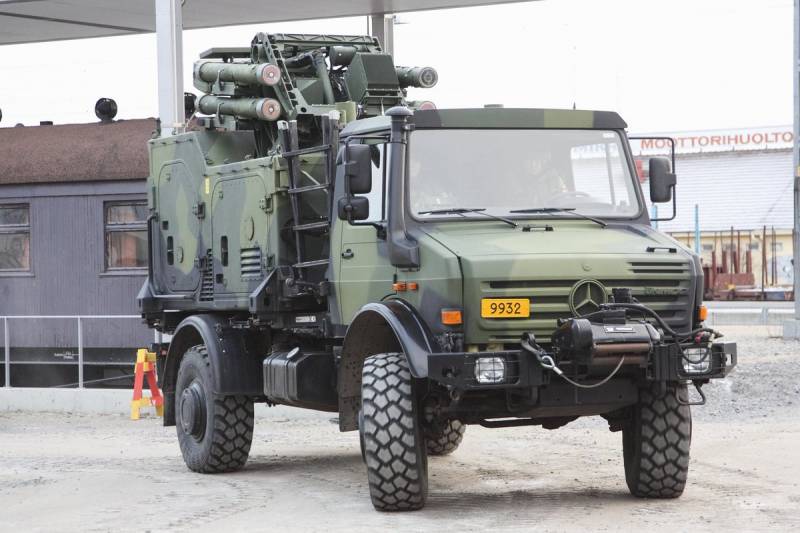
In the 1960s, it became clear that it was impossible to protect army units operating in the front line from air attack weapons with anti-aircraft artillery alone. However, until the second half of the 1970s, Finland, which then had modest economic opportunities, could not afford to purchase air defense systems abroad.
The first anti-aircraft missile system in the Finnish Ground Forces was the Soviet-made portable Strela-2M. In the second half of the 1980s, Finland imported the Igla-1E MANPADS. The Soviet side also offered mobile air defense systems: Kvadrat, Osa and Strela-10. However, for financial reasons, the Finnish military could not afford them.
After the collapse of the USSR, French short-range mobile air defense systems Crotale NG arrived. In 1997, to pay off the Soviet debt, Russia supplied the Buk-M1 air defense system. In Finland, these tracked systems, created for military air defense, were used as facilities and served for about 10 years.
At the beginning of the 70st century, a contract was signed for the supply of Swedish-German short-range air defense systems ASRAD-R. In parallel with this, the Swedish RBS-2015 portable-portable systems began to enter the Finnish air defense units of the battalion level. In 92, the Finnish army adopted the FIM-XNUMX Stinger MANPADS.
Man-portable air defense systems
In the 1970s, the fighting in Southeast Asia and the Middle East demonstrated the good combat effectiveness of portable anti-aircraft missile systems. In those years, MANPADS were produced only in the USA, Great Britain and the USSR. In the first generation MANPADS: the American FIM-43 Redeye and the Soviet Strela-2M, rockets were used that aimed at the heat of an aircraft engine, which made it possible to implement the “fire and forget” principle. The British Blowpipe had manual radio command guidance, which made it completely insensitive to thermal interference. At the same time, the effectiveness of this very bulky and heavy MANPADS directly depended on the level of training and the psycho-emotional state of the operator, who aimed the missile at the target using a joystick.
The supply of American FIM-43 Redeye MANPADS to Finland in the 1970s was impossible for political reasons. The combat effectiveness of the British Blowpipe, for which it was necessary to constantly train shooters intensively, was in doubt. In addition, carrying the complex with a curb weight of 21 kg on foot in a wooded area was very difficult. The optimal choice for Finland, which at that time maintained friendly relations and close economic ties with the Soviet Union, was the Strela-2M MANPADS. An important factor that influenced the choice of the Soviet portable complex was its successful combat use in real combat operations.
At the time of its appearance in 1970, the Strela-2M MANPADS, adopted as a battalion-level air defense system, was very good, and generally surpassed the American FIM-43 Redeye complex of a similar purpose in terms of combat effectiveness.
The first Soviet portable anti-aircraft missile system, serviced by one gunner-operator, could hit targets at a distance of 800–4 m in an altitude range of 200–50 m. The maximum rocket speed was 2 m/s. The weight of MANPADS in combat position is 300 kg. Length - 500 15 mm. Rocket diameter - 1 mm. The launch weight of the rocket is 490 kg. The warhead weighing 72 kg is equipped with 9,8 g of powerful explosives.
The Strela-2M complex consists of a reusable launcher, an anti-aircraft guided missile with a thermal homing head in the launch tube, and a disposable external power source. In the stowed position, it is carried on a shoulder strap behind the back of the anti-aircraft gunner.

MANPADS "Strela-2M" significantly increased the air defense capabilities of small units. But the use of an anti-aircraft missile with an uncooled single-channel IR-GOS did not allow for the selection of heat traps and limited the launch range against targets with low thermal visibility. In the course of actual combat operations, it turned out that even in ideal weather conditions, in the absence of organized interference, out of 10 launched missiles, at best, only two hit the target.
This was largely due to the tense moral and psychological state of operators exposed to combat stress, which often led to errors: incorrect determination of the distance to the target, non-optimal choice of the launch moment, firing towards the sun, etc. If the enemy used heat traps, the effectiveness of the application decreased many times.
Nevertheless, in general, the use of the first-generation Soviet portable complex justified itself: enemy pilots, seeing missile launches, were forced to go to high altitudes, where they became vulnerable to other air defense systems, enemy combat aircraft, in the event of a missile launch, in most cases stopped attacking a ground target and tried to leave the area in which they were shelled, which led to the disruption of the combat mission.
The Finnish army officially adopted the Strela-2M MANPADS into service in 1978 under the name Ito 78. The exact number of MANPADS delivered could not be established, according to unconfirmed reports, Finland ordered 500 missiles and 100 launchers.
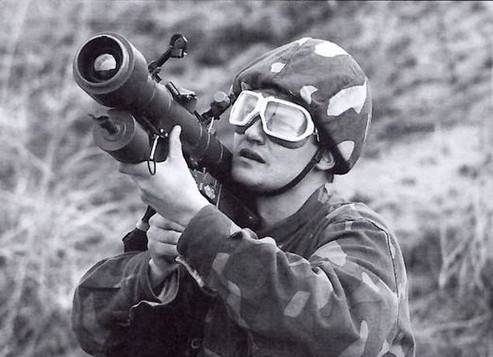
The training of MANPADS operators took place in the garrisons of Huril and Rovaniemi. The first training launch was made at the Vattayanniemi test site in February 1979. The active operation of the Ito 78 MANPADS continued until 2001, after which they were taken to the reserve, where they were until 2015. However, foreign sources write that the Finnish Strela-2M could not be used by that time, due to the lack of conditioned batteries.
Since 1986, the Finns received the Igla-1E MANPADS, used under the designation Ito 86. This complex had improved combat capabilities and could select false targets.
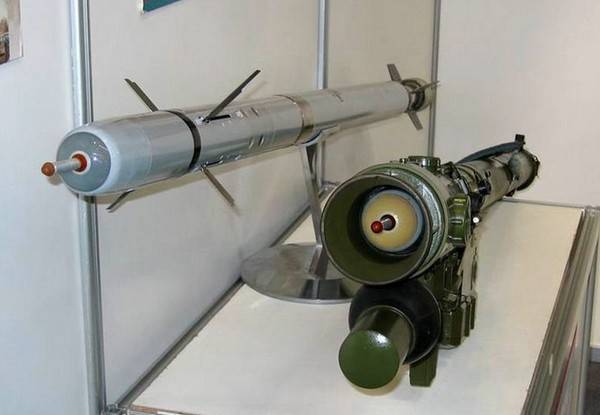
MANPADS "Igla-1" assembled with a model of missiles
The Igla-1 complex, adopted by the Soviet army in 1981, weighed 17 kg in combat position. The mass of the launch tube with the rocket is 10,8 kg. The far boundary of the affected area is 5 m. The ceiling is 000 m. The maximum missile flight speed is 2 m / s.
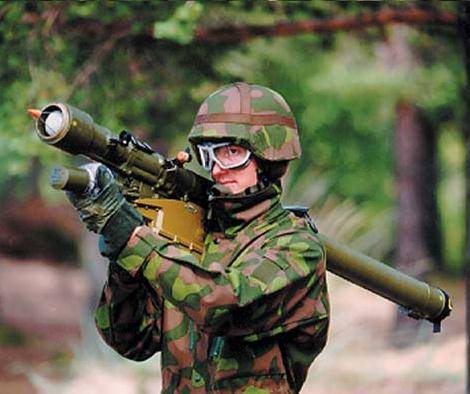
For a long time, the Ito 78 and Ito 86 MANPADS were used by the Finnish army in parallel. For effective use in wooded areas, the Finnish military used platforms on a truck chassis that rose above the treetops. In the past, Moscow has repeatedly offered Helsinki a new generation of man-portable systems, but the Finns preferred Western air defense systems.
At the beginning of the 86st century, Finland purchased from the Swedish company Saab Bofors Dynamics 70 deeply modernized RBS-05 near-field air defense systems with Bolide missiles guided by a laser channel. In the Finnish army, this complex is known as Ito XNUMXM.
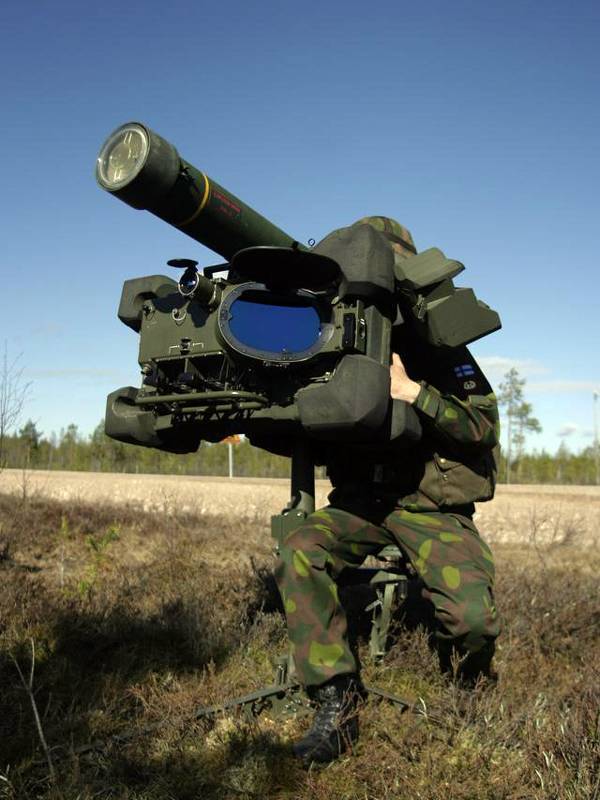
SAM Ito 05 in firing position
The maximum firing range is 8 m, the height reach is 000 m. The flight speed is more than 5 m/s. The rocket uses a cumulative fragmentation warhead with armor penetration up to 000 mm. If the air target avoided a direct hit, it is struck by ready-made lethal elements - tungsten balls.
The guidance principle, known as "laser trail" or "saddled beam", allows decoys effective against heat-seeking missiles to be ignored. But when following a missile inside a corridor formed by laser radiation, it is necessary to keep the target in sight until the moment the missile hits. Another disadvantage is the reduction in the firing range in adverse weather conditions, and when the target enters the cloud, there is a high probability of failure of guidance. There is information that Ito 05M is capable of operating on surface targets, which allows it to be used in antiamphibious defense.
Although the Ito 05M complex is formally considered portable, it cannot be used from the shoulder and carried in the field alone. The tripod, guidance unit, power supply and state recognition equipment together weigh about 120 kg. Therefore, the RBS-70 complexes move on off-road vehicles, ATVs and articulated tracked conveyors.
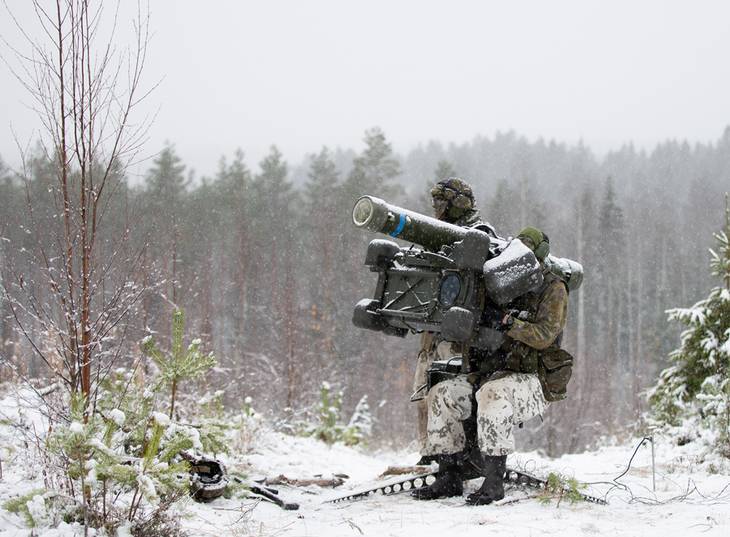
A large weight limits the mobility of the complex, but at the same time, compared to shoulder-launched MANPADS, the operator has better conditions for long-term duty in position.
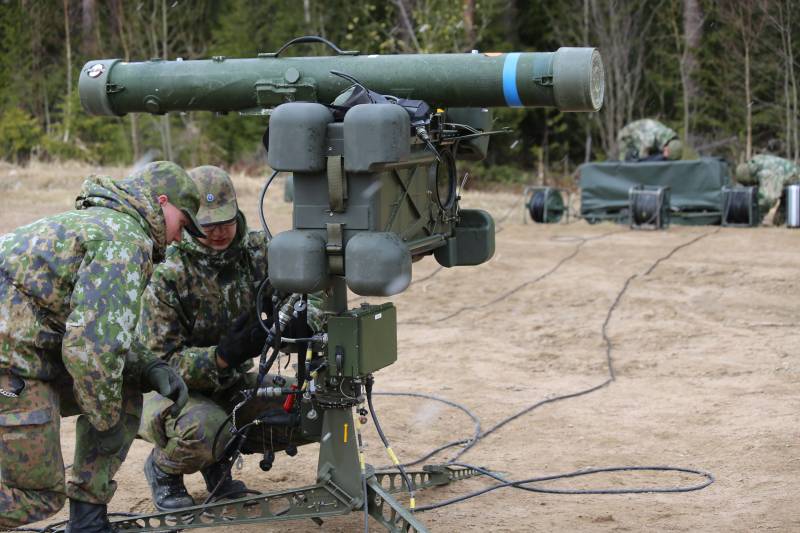
In a fixed deployment, external power supplies can be used for power supply.
In 2011, the leadership of the Finnish Ministry of Defense raised the issue of the need to replace the Soviet-made Igla-1E MANPADS, in connection with which Helsinki requested the United States to purchase FIM-92C Stinger man-portable air defense systems. The request included 600 kits, as well as related equipment and a maintenance package. The deal was valued at $330 million.
It was possible to agree on the purchase of American MANPADS in 2013, after which the training of operators began. In 2015, the Stinger was adopted by the Finnish army under the designation Ito 15.
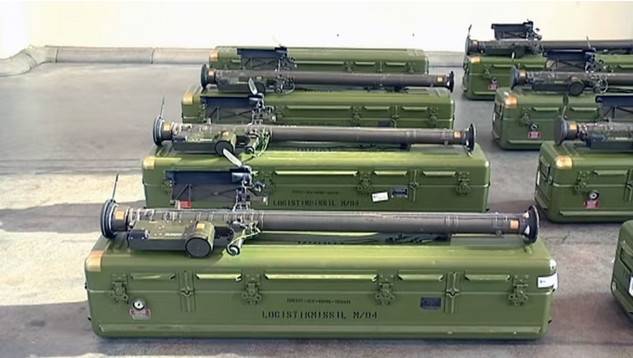
Regarding the delivery of the first batch of Stingers, conflicting data were published in the media. Some sources claim that these were FIM-92C MANPADS donated by Denmark. Others write that Finland acquired the FIM-92E (RMP Block I) modification complexes from the surplus of the US Army stored in warehouses. According to reference data, as of 2016, the Finns received 371 American-made man-portable anti-aircraft systems. Apparently, now there are already more Stingers in the Finnish army.
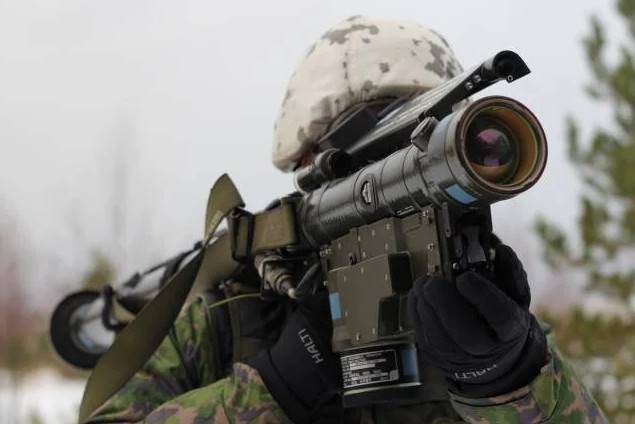
The release of the FIM-92 Stinger MANPADS began in 1981, and taking into account all the modifications, more than 70 anti-aircraft missiles have been produced to date. Currently, complexes of this type are manufactured by Raytheon Missile Systems Corporation.
In the combat position, the Stinger weighs about 16 kg, and the launch weight of the rocket is 10,1 kg. It is possible to defeat air targets at a distance of 200 to 4 m. Reach in height - 500 m. The maximum speed of the rocket is 3 m / s.
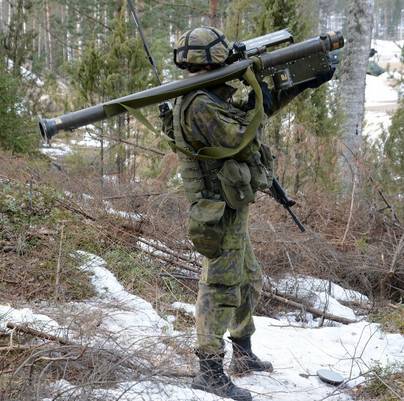
The Finnish army has at its disposal MANPADS with the Stinger RMP Block I missile. This model, created in the late 1990s, is not the latest technology, but at the same time this missile is considered quite effective. It is equipped with a compact lithium battery, an advanced processor and a memory device in which target parameters are recorded before the missile launch. The cooled homing head is capable of capturing targets with low thermal visibility, and the microprocessor provides target selection against the background of thermal traps.
Mobile military anti-aircraft missile systems
In the second half of the 1980s, when looking for a replacement for the hopelessly outdated Soviet-made ZSU-57-2, the Finns turned their attention to the French Crotale NG short-range air defense systems. These mobile complexes were supposed to protect the near rear from attacks by air attack weapons operating at low altitudes in the front line.
In 1992, a contract worth $170 million was signed. In order to standardize with the equipment available to the troops and reduce the cost, the French air defense systems were placed on the chassis of the Finnish Sisu XA-181 armored personnel carriers. After that, the complex received the designation Ito 90M.
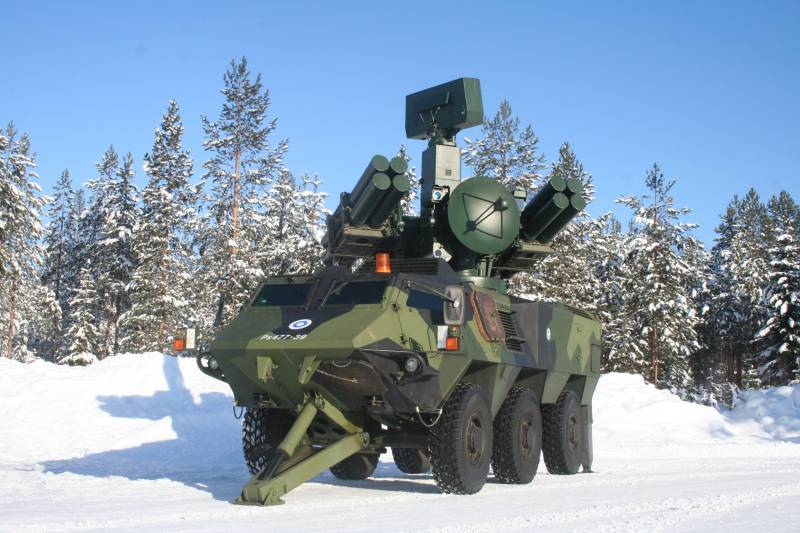
ZRK Ito 90M
The Ito 90 air defense system with radio command-guided missiles had a range of up to 11 m. The altitude reach is 000 meters. Detection tools include a Thomson-CSF TRS 6 surveillance radar with a detection range of 000 km, a J-band tracking radar with a range of 2630 km, and an optoelectronic station with a wide field of view. Eight ready-to-use missiles are placed on the rotary module. The same amount is transported inside the car.
At the beginning of the 90st century, the Finnish Krotali underwent modernization and refurbishment, after which they became known as Ito 90M. A number of sources claim that the Ito 1M air defense system contains new-generation VT15 missiles with a range of XNUMX km.
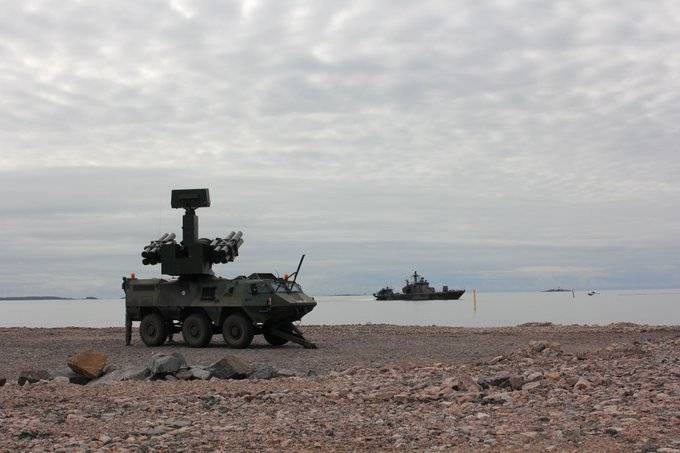
In general, the Ito 90M air defense system is a fairly effective and relatively inexpensive military air defense system. The effectiveness of the modification of the 1992 model is comparable to the Soviet Osa-AKM air defense system. But the Crotale NG air defense system is more compact and placed on an armored chassis.
For the timely detection of air targets and the issuance of target designation by the Ito 90M air defense system, GIRAFFE MK IV mobile radars (Finnish designation MOSTKA87M) are used on the XA-181 armored personnel carrier chassis.
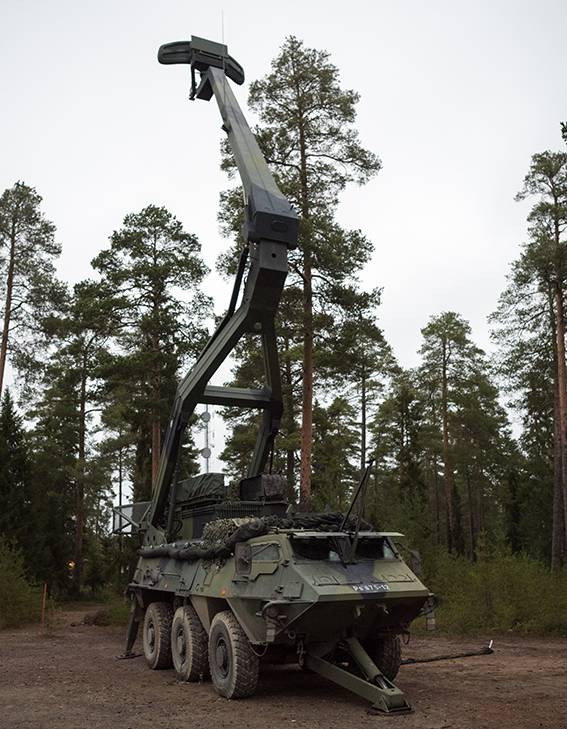
Radar MOSTKA87M
Anti-aircraft batteries are controlled from the ITJOKE87 mobile command post based on an off-road truck or armored personnel carrier.
Almost simultaneously with the purchase of Swedish portable-wearable complexes of the near zone, a contract was signed for the supply of mobile Swedish-German air defense systems ASRAD-R. As in the upgraded RBS-70 complex, the ASRAD-R uses laser-guided Bolide missiles to engage air targets.
This complex, created by Saab Bofors and Rheinmetall, thanks to its modular design, can be mounted on any wheeled vehicle or tracked platform of suitable payload. The mass of the anti-aircraft module with missiles is about 900 kg.
Each machine is an independent combat unit and is capable of fighting an air enemy at a distance of up to 8 meters and an altitude of 000 meters. To detect air targets, the PS-5 radar is used, which controls the airspace within a radius of 000 km.
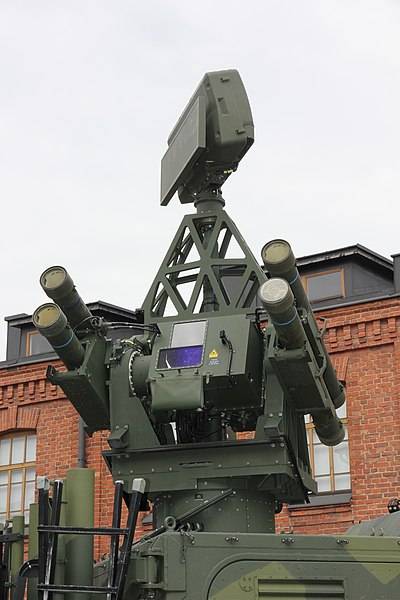
There is also a combined optoelectronic sighting and search system with a thermal imager, which allows you to search for a target without turning on the radar. Ready-to-use ammunition is four missiles, the same number is in stock, loaded by calculation forces.
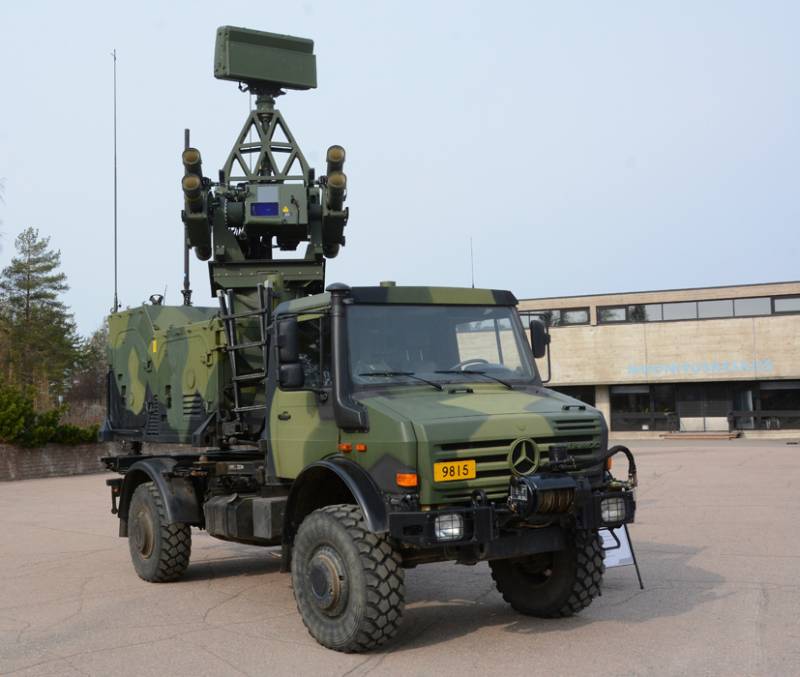
SAM ASRAD-R on the chassis of Mercedes-Benz Unimog 5000
The combat vehicle based on the Mercedes-Benz Unimog 5000 truck weighs about 12 tons and can accelerate on the highway up to 90 km/h. Calculation - 3 people.
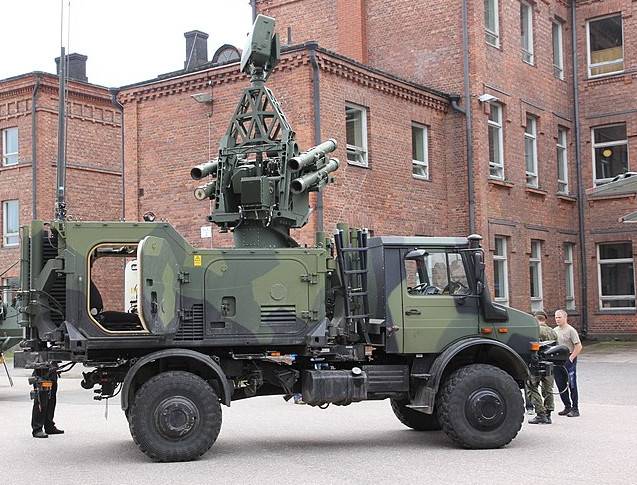
In Finland, the ASRAD-R air defense system received the designation Ito 05, it is installed on the Sisu Nasus tracked chassis (four installations) and the wheeled Mercedes-Benz Unimog 5000 (twelve installations). In total, the anti-aircraft battery has 4 combat vehicles.
One battery is located in the suburbs of Helsinki as an addition to the NASAMS II air defense system. The complex was deployed separately in the capital as an addition to anti-aircraft missile systems, the rest are intended to cover army units, military bases and bridges.
Prospects for the development of the Finnish military air defense
After Russia launched a special military operation on the territory of Ukraine and in connection with Finland's forthcoming entry into NATO, there was an urgent need to strengthen the air defense of the Ground Forces.
The towed 23-mm artillery mounts 23 ItK 95 and 35-mm 35 ItK 88, anti-aircraft Tanks Marksman on the Leopard 2A4 chassis, Ito 05M and Ito 15 MANPADS, Ito 90M and Ito 05 short-range mobile air defense systems are quite effective and modern models capable of fighting various air targets operating at low altitudes. However, in the event of a full-scale conflict and the massive use of tactical aviation, helicopters, strike reconnaissance drones, drones-kamikaze, planning bombs and cruise missiles, the available number of military air defense assets will be small.
In addition, military experts point out that the 23-mm anti-aircraft guns 23 Itk 61, which are in reserve, no longer correspond to modern realities. A significant part of Swedish-made mobile radars with antennas raised on folding rods require repair, and their number is not enough for long-term combat operations.
With a high degree of probability, it can be expected that in the near future the Government of Finland will allocate additional appropriations for the purchase of new batches of military air defense equipment and radars for lighting the air situation at low altitudes.
Most likely, the well-proven ASRAD-R mobile air defense systems, relatively easy to use and affordable to carry on foot, FIM-92 Stinger MANPADS, as well as new digital radars of the Giraffe family manufactured by SAAB Microwave Systems, will be purchased.
In connection with the modernization of military air defense and the acquisition of new anti-aircraft systems, there is a high probability of transferring Soviet-made 23-mm twin anti-aircraft guns of Soviet production and Ito 90M combat vehicles with French modules of the Krotal air defense system to the Ukrainian armed forces.
Продолжение следует ...
Information